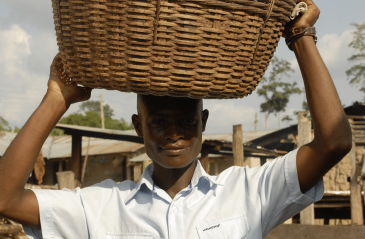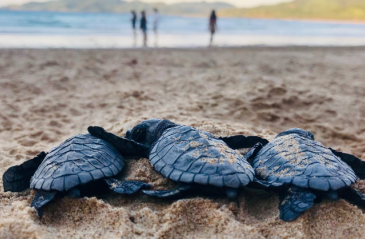
Community Energy Cooperative: Schönau, Germany
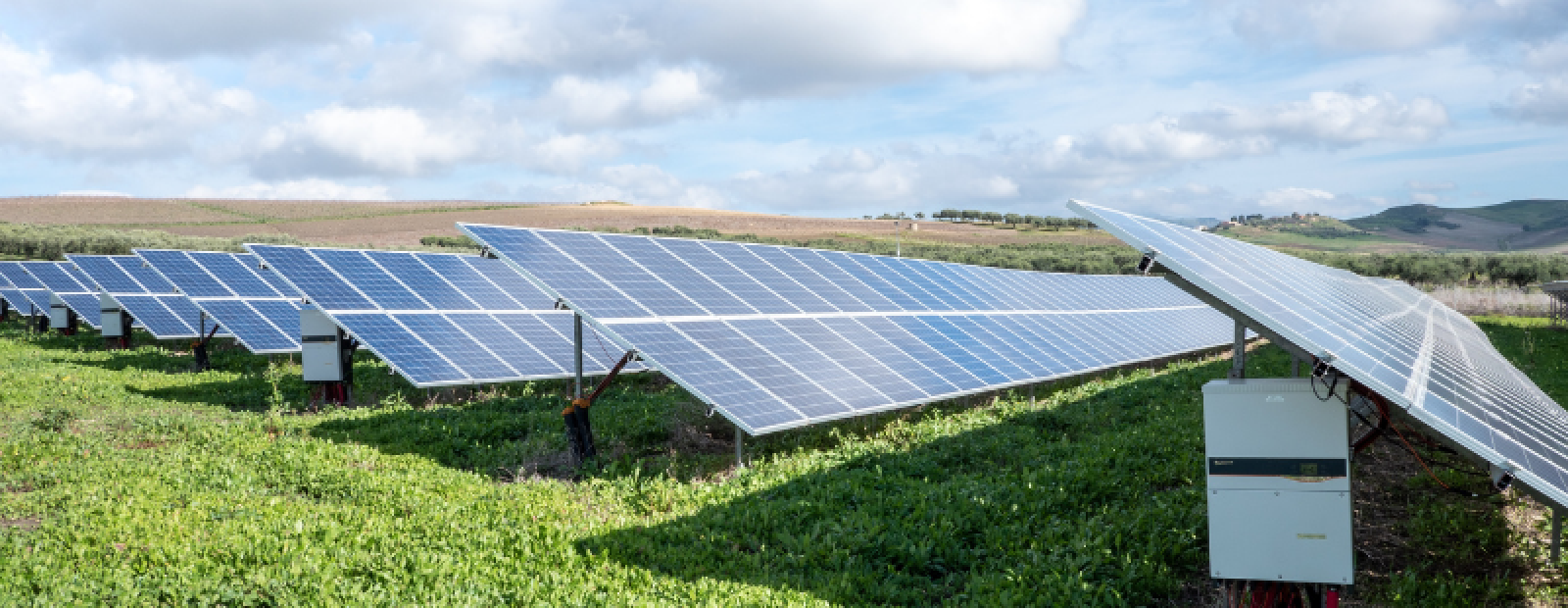
ElektrizitätsWerke Schönau (EWS), a community-owned energy cooperative, was founded through extensive community engagement and mobilisation after a dispute between the local community and the region’s incumbent nuclear power provider.
Driven to action in the aftermath of the 1986 Chernobyl disaster, the community advocated strongly for a regional transition to clean energy. Through regular and systematic community engagement, and after two referendums, they successfully set up EWS and took over operations of the local electricity grid themselves.
Today, EWS has 185,000 supporters nationwide. The initiative demonstrates how grassroots activism can galvanise action and earn the trust of a local community, transforming into a broader, large-scale environmental movement. It also shows how relatively unconventional methods of public engagement, such as electricity-savings competitions, awards showcases, and documentary films, can capture the imagination of the public and contribute to transforming public behaviour.
Background and Context
Citizen involvement in the clean energy movement in Schönau took root in April 1986 when news of the catastrophic nuclear disaster in Chernobyl reached Germany. The Chernobyl disaster caused a radioactive cloud of precipitation to drift over western Germany, contaminating water supplies, food, and soil systems. At the time, much of Germany’s electricity also came from nuclear and coal-fired power plants. In this context, Ursula Sladek, a Schönau resident and schoolteacher, along with her husband and other local residents, founded a grassroots local action group, Parents for a Nuclear-Free Future. The group’s objective was to build awareness of the ecological and health hazards of nuclear power generation, cut the community’s energy use, and lobby the local utility to forgo nuclear power in its mix. The next steps involved widespread community engagement, fundraising, and experimentation around ways by which Schönau could become a proponent of nuclear-free clean energy generation.
The Initiative
ElektrizitätsWerke Schönau (EWS), founded in 1994, is a community-owned energy cooperative located in Schönau, a rural town in southwest Germany. In 1991, the incumbent local utility in Schönau offered to renew its licence to operate the local grid earlier than planned. Sladek and the action group members made various efforts to use the contract renewal opportunity to push for an inclusion of environmentally-friendly measures in the utility’s licence, through a change in the pricing model. However, the utility refused. This served as a turning point and catalyst for Sladek and the action group members, as they decided to take over operation of the grid themselves. Over the course of the next decade, Sladek and the citizens of Schönau took the utility to court, participated in two referendums (winning 85% of the town vote in the second referendum), set up EWS, and ultimately won the right to operate the grid for 20 years. The liberalisation of the electricity market in 1998 allowed EWS to provide electricity nationwide.
As of 2021, EWS produces and distributes clean energy across Germany to over 185,000 people, while also supporting a number of technical and market innovations.1 It owns wind and solar parks, as well as gas and electricity grids. In addition, its philanthropic wing continues to support and finance multiple small-scale sustainable energy projects, from household energy to storage units and collectives.2
How was the need for clean energy presented and communicated?
Before EWS was set up
The members of Parents for a Nuclear-Free Future engaged the citizens of Schönau in dialogues around clean energy and the need to transition from nuclear power to sustainable energy sources, through various conventional and unconventional means. Members who were engaged in the initiative early on held energy-saving consultations and provided information at information stands. They published energy-saving tips across local media outlets and organised electricity-saving competitions. The competitions ran from 1989 to around 1995 and would offer prizes such as holiday trips. Some of the community who participated saved as much as 50-60% on their power bills.3,4
Members also went door to door to exchange energy-efficiency tips and hold monthly seminars in Schönau. They organised aid for a children's cancer clinic in Kiev to raise awareness of the dangers of nuclear power. Additionally, they popularised their cause more widely, with interesting activities such as assembling a cabaret group called "Wattkiller" that went on to tour the region. Within the membership, there were four or five members who focused on discussing the work the group did at 50-60 venues per year, communicating the message about clean energy through word-of-mouth and direct engagement.5 The scale and sense of purpose shown by the grassroots movement was impressive, particularly given that Schönau is a small rural town. Some of the early members stated that their actions were not initially aimed at taking over operation of the electricity grid. This objective developed over time as it became clearer that community demands for energy-saving tariffs and renewable energy were not going to be considered by the municipal council or the incumbent grid operator KWR.6
Media coverage at this stage of the movement was vital, as it provided publicity when members could not afford marketing campaigns. It was also felt that media coverage of prizes and other activities provided greater legitimacy than a traditional marketing campaign.7
After EWS was set up
Once EWS was established, it committed itself to developing clean energy sources by helping to finance community energy initiatives and small businesses who were interested in renewable energy production. EWS reactivated small hydroelectric power plants, and supported investments in combined heat power plants and photovoltaic systems. They did this by offering guidance on potential government subsidies and information on the potential for alternative energy sources.
EWS also published its own magazine and newsletter, covering a variety of issues related to clean energy. They launched multiple campaigns on topics such as solar energy, carbon taxes, and divestment in order to raise awareness and make often complex issues accessible to the public. EWS continues this work even today, and materials on their website are updated frequently.8 According to Sebastian Sladek of EWS, the campaigns were not aimed at making money for the company, but rather at building awareness among the public. The idea is that people can learn how to play their part in the green energy movement and take personal responsibility, if they are made aware of how to do so. EWS does not promote green electricity simply as a concept, and its campaigns convey the idea that everyone is needed to make the movement a success, outlining how people can get involved.9
In 2007, the story of Schönau and EWS was presented on film to make the story accessible to a new generation of climate action groups. The one-hour documentary covers the setting up of the local community action group and the establishment of EWS, concluding with its tenth anniversary in 2004. It is intended to inform other communities and campaigns about the initiative and motivate civic engagement. The film has attracted both national and international attention. Up until today, the EWS considers one of its primary responsibilities to be advancing the participation of people and communities in energy distribution and production, not just in Schönau but throughout Germany and beyond.10 It fulfils this responsibility by regularly engaging the general public through seminars on clean energy and energy transitions. Further, the Schönau Energy Initiatives, together with the Schönau Council, have established an awards showcase for the "Electricity Rebel of the Year'', which has run from 1999 until today. It is awarded at the Schönau Electricity Seminars, where the original group of EWS members engage with a new generation of energy action groups, who carry on the idealism of the EWS with their own actions and projects.11 EWS also focuses on the use of social media to extend the reach of its campaigns.12
What was the extent and nature of citizen collaboration?
After Chernobyl, a number of concerned parents in Schönau, led by Ursula Sladek, banded together to set up Parents for a Nuclear-Free Future. They drove forward collaboration with the citizens of Schönau through their knowledge of the local sociopolitical context and their close relationships with its inhabitants.13 These relationships proved particularly powerful in the way that they mobilised the community in the pre-referendum campaigns. The action group ran a very locally focused door-to-door campaign and organised several community awareness drives. The referendums themselves showed strong community support, which strengthened the action group’s standing in its ongoing efforts.14
Even when the action group decided to establish EWS and take over operation of the grid, they first set about proving to the community that they were up to the task by having a PV unit installed on the roof of a house, as well as a hydroelectric station for a company generating the electricity needed to cover its production.15 Discussions around the progress of these projects were held regularly, with the lessons being widely shared. The action group also organised visits to the generation units for the residents of Schönau and the region’s schoolchildren, enabling a better understanding of renewable energy technologies while also showcasing the feasibility of the initiative.16
In the first half of 1997, the action group launched a collective campaign to raise the additional money needed to buy the grid from the old operator.17 The community of Schönau, led by the action group, contacted some of the biggest German advertising agencies, going on to collaboratively develop a fundraising campaign for the Schönau Energy Initiatives.18
Today, EWS is a cooperative with a large and dispersed ownership structure, with more than 6,000 members from across Germany. While EWS views the cooperative structure as “the most hands-on, democratic form of ownership”, in practice its large size means that it is impossible for all its members to be involved directly. Ulrich Drescher, a member who participated in the transition from collective business to cooperative, says that attendance at its annual meeting is limited to only 300 of the more than 6,000 members. “It’s those who have the time, money, and desire to come,” he says.19
What was the level of action addressed by the public engagement?
The community engagement process targeted action at the individual, community and systems levels. The objective of the initiative and the engagement was primarily to promote the production of clean energy and steer away from nuclear power. Initially, the level of action involved raising awareness and fostering knowledge exchange with other concerned citizens of Schönau on how to cut electricity consumption; ultimately, it incentivised more people and communities to join the wider clean energy movement.
The Public Impact
The EWS became the energy supplier in Schönau in July 1997 and since then has offered the town’s inhabitants energy-saving tariffs and steady remuneration for local ecological electricity generation.
Today, there are more than 185,000 supporters across Germany who buy green electricity from EWS, free of any links with coal and nuclear power plant operators.20
EWS has set up a large solar plant in Schönau, making it the town with the densest concentration of solar power in Germany.21
From March 2015 onwards, EWS owned almost 100% of the biogas share across Germany. As with electricity, part of the gas price is used as a “sun cent” to promote ecological energy production.22
Further Considerations and Lessons from this Case
From CPI’s extensive work on public engagement, we have found three important drivers to public impact that are relevant to discuss when designing public engagement processes around climate change: Enabling Adaptability and Learning; Designing for Inclusion; and Embracing Complexity. We discuss the relevance of each to the case study below:
Enabling Adaptability and Learning
The organic, experimental, and flexible nature of public engagement around the creation of EWS in Schönau allowed for the grassroots action group set up by Ursula and Michael Sladek to learn and evolve as the movement expanded. Much of its success can be attributed to the learning mindset that Ursula and Michael Sladek and the initial group of members brought to the initiative. The group went up against a large incumbent utility company and successfully took over operation of the local grid, while building their own knowledge base of the complex laws and technologies around energy supply, and trying things that had never been tried before. The group suffered some defeats along the way, but also picked themselves up, trying different avenues and engagement strategies to build awareness and momentum over a period of 15-20 years.
Flexibility and experimentation were designed into the way the local action group operated from the start. Initially, the group drove awareness and built messaging around why nuclear power was harmful, subsequently moving on to more positive framings of what they stood for as an alternative to nuclear energy. They began by exploring ways to cut energy use and reduce overall demand, which involved monthly seminars and door-to-door campaigns promoting energy efficiency. They also experimented with driving action by distributing energy meters to measure usage and encouraging peer-to-peer competition among the residents of Schönau to see who could consume the least energy. But given the small-scale impact of these measures, they shifted their focus to the other end of the funnel, to the electricity grid. Initially, they engaged in discussions with the local utility, encouraging it to move away from nuclear provision. However, this engagement came to a standstill, because the utility refused to do so. Over the next 10 years, the local action group raised funding, galvanised action from Schönau’s 2,500 citizens, built local momentum and awareness, took the utility to court, prevailed through two local referendums, and eventually gained the legal right for EWS to operate the grid.
Overall, it appears that the experimental and learning mindset remains an integral part of EWS and its culture, as it currently experiments with financing new technologies, expanding its philanthropic initiatives, and supporting other local grassroots community energy initiatives.
Designing for Inclusion
The objective of the public engagement process was to drive action among the entire resident community of Schönau, through wide-ranging community activities and by focusing on community relationships in the small town where everyone knows everyone else. EWS still makes extensive efforts to also reach out to towns across Germany with advice on how to set up their own community-owned energy companies, pointing out the importance of focusing on small projects that are feasible. Further, a significant percentage of EWS’s profits is reinvested in small-scale citizen energy projects, from household generation to energy storage units and other locally owned grids. It also supports a number of local training and education initiatives and energy projects in developing and emerging economies. The annual dividend is capped at 3.5% of the profit, and the shares of new members are limited to €1,000 a head, so as to discourage members who are only interested in the money and are not committed to the wider cause of clean energy and energy justice.23
Today, a four-person Board (elected every three years by EWS members) makes key decisions on the activities of EWS, and while efforts are made to engage all the members, EWS has grown too large for all members to be directly involved. While this is inevitable, given the scale of EWS’s operations, it is important to identify ways in which the collective democratic ideals of what began as a community action group can be maintained as the cooperative grows and expands.
Embracing Complexity
The local action group in Schönau achieved a complex systems transition over the course of more than a decade by slowly harnessing community support through targeted focus on a single issue, gradually expanding the scope of the movement and the associated community engagement. Founded in the context of Chernobyl, the community movement began by concentrating exclusively on abolishing nuclear energy. It later widened its scope to embrace renewable energy sources, formulating a broader mission around energy justice and overall sustainability.24 For example, it conducts campaigns and makes awards that reflect its original anti-nuclear stance. At the same time, it effectively links those messages with co-benefits in terms of community regeneration, green jobs, cost of living, and quality of life, both internally within its membership and externally. In this sense, its current public engagement campaigns also explore the interlinkages and interconnectedness of the technical, social and cultural aspects of an energy transition, and what that means for communities and those driving the initiative.
Bibliography
[1][5][6][10][17][18][22] Nuclear fire out of control - News Report (translated from German), April 29 1986, EWS, https://www.ews-schoenau.de/ews/geschichte/, Accessed 12 February 2021
[2][15][19][20][21][23] Case study: Clean Energy by the People, for the People, Paul Hockenos, Winter 2019, Stanford Social Innovation Review, https://www.ews-schoenau.de/export/sites/ews/ews/presse/.files/1901-stanford-review-clean-energy-ews.pdf, Accessed 10 February 2021
[3] The Black Forest Rebel, https://www.ews-schoenau.de/export/sites/ews/ews/presse/.files/die-schwarzwald-rebellin-brigitte.pdf, Accessed 12 February 2021
[4][7][9][12] Interview with Sebastian Sladek, board member of EWS, 1 March 2021
[8] Solar Power Ahead (translated from German), Robert Goldback, December 17 2020, EWS, https://www.ews-schoenau.de/energiewende-magazin/zur-ews/sonnenkraft-voraus/, Accessed 11 February 2021
[10] Schönau Electricity Rebels, Energiewende Magazine, EWS, https://www.ews-schoenau.de/energiewende-magazin/themenhefte/thema-schoenauer-stromrebellen/, Accessed 11 February 2021
[13][14][16] The Energy Transition Chronicles, Energy Cities,https://energy-cities.eu/wp-content/uploads/2019/01/chroniqueste_complet_en.pdf, Accessed 11 February 2021
[24] Press Review, October 2020, EWS https://www.ews-schoenau.de/ews/presse/pressespiegel/, Accessed 5 February 2021
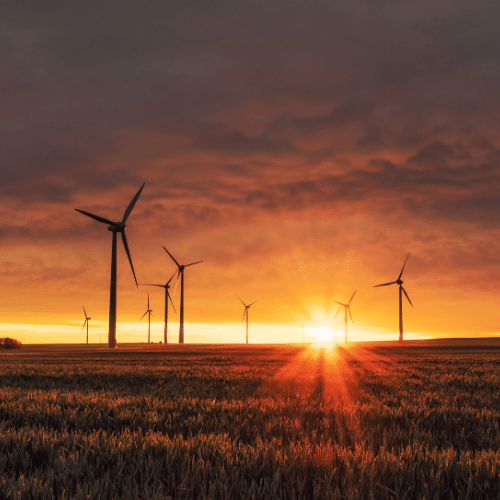
Engaging the Public on Climate Change
Our Case Study Compendium provides practitioners with a framework to unpack different approaches, outlining how public engagement can better embrace the complexity of climate issues.
You may also be interested in...

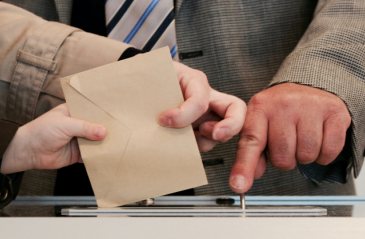
Green Participatory Budgeting: Lisbon, Portugal
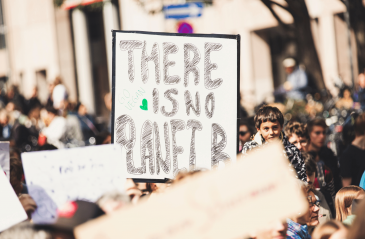
Oxford Citizens’ Assembly on Climate Change, Oxford, UK
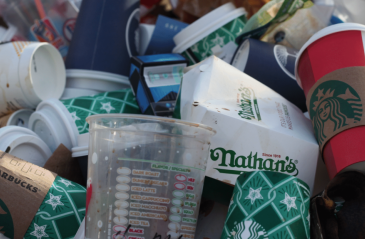
Food: Too good to waste (FTGTW) network, U.S.

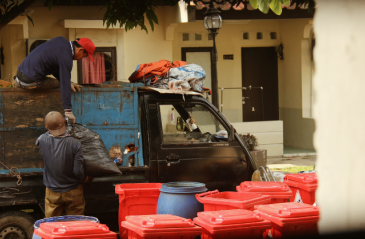
Waste Management Cooperative: Pune, India
